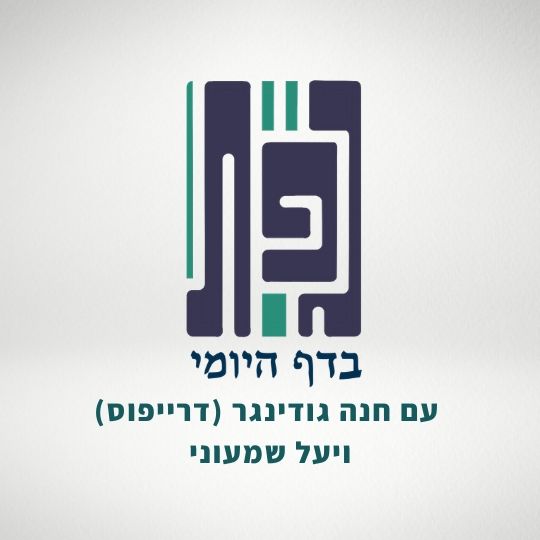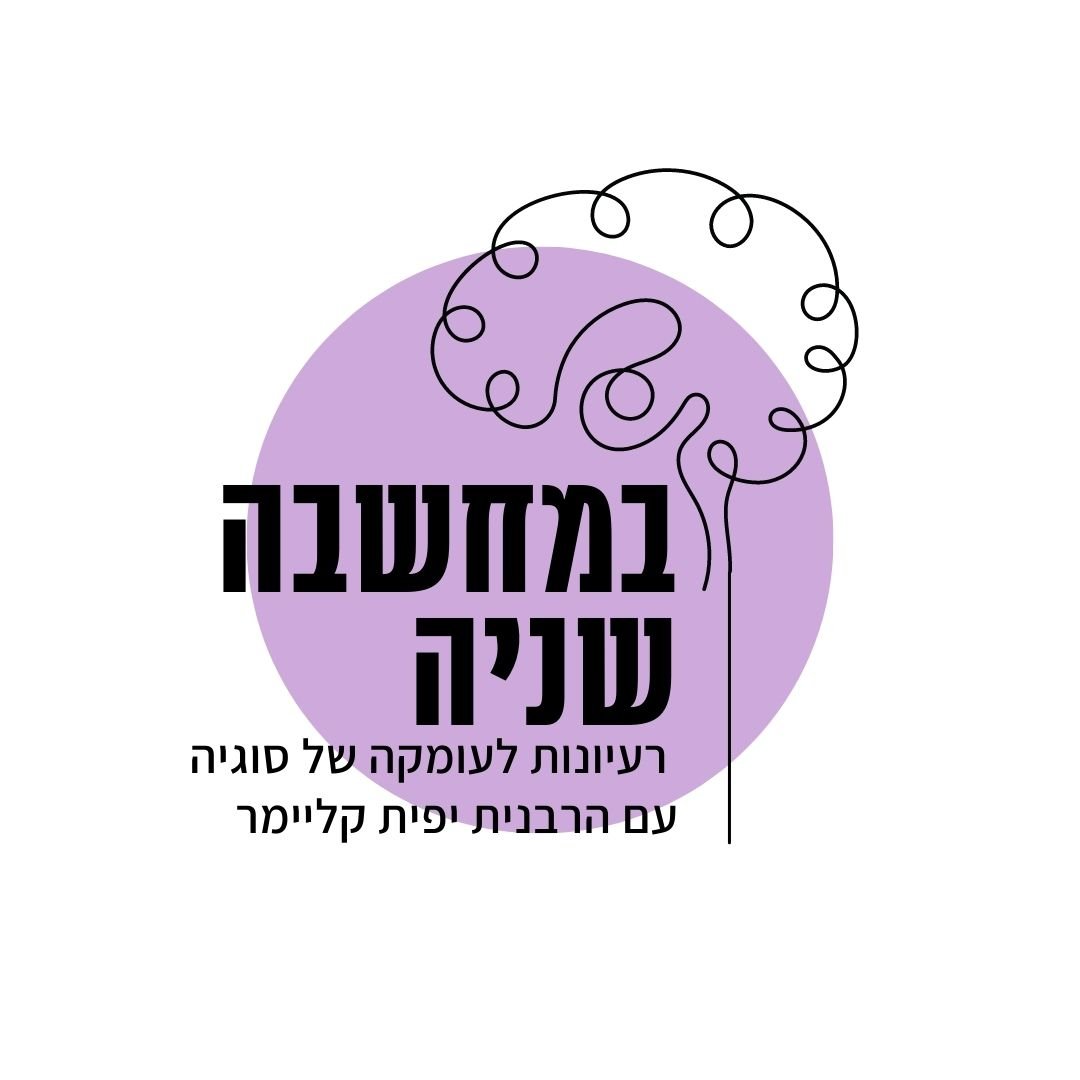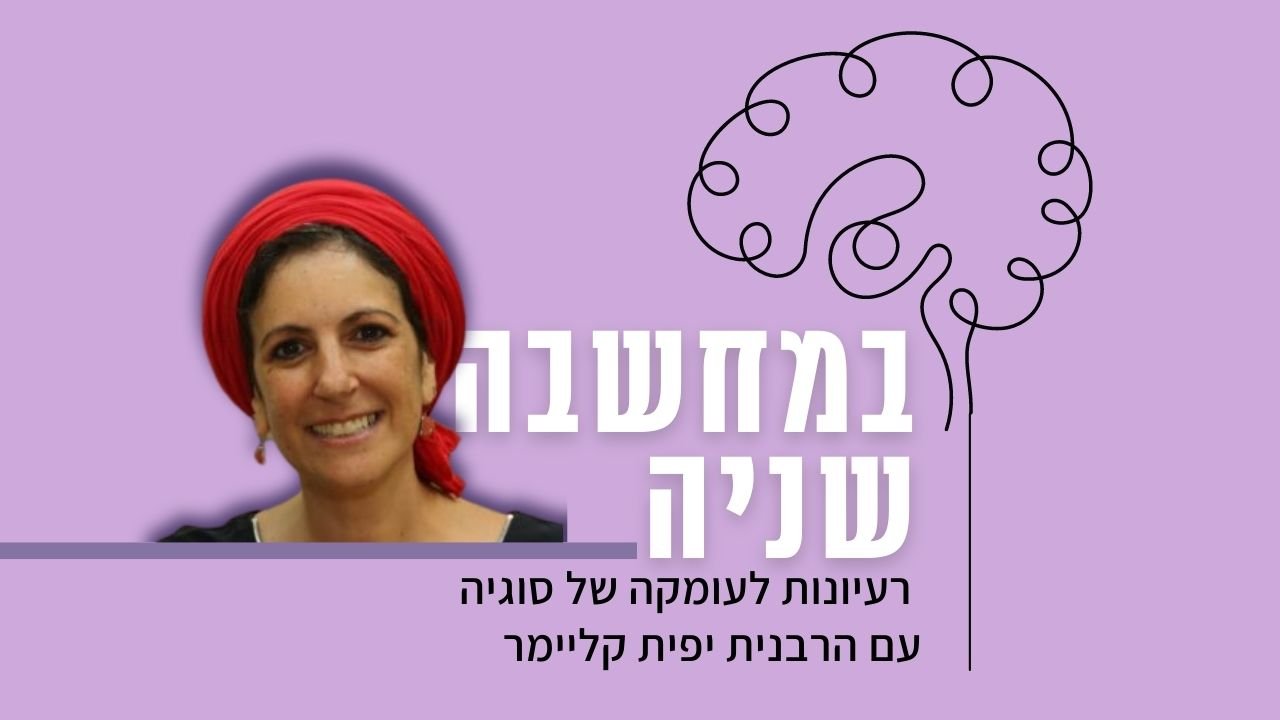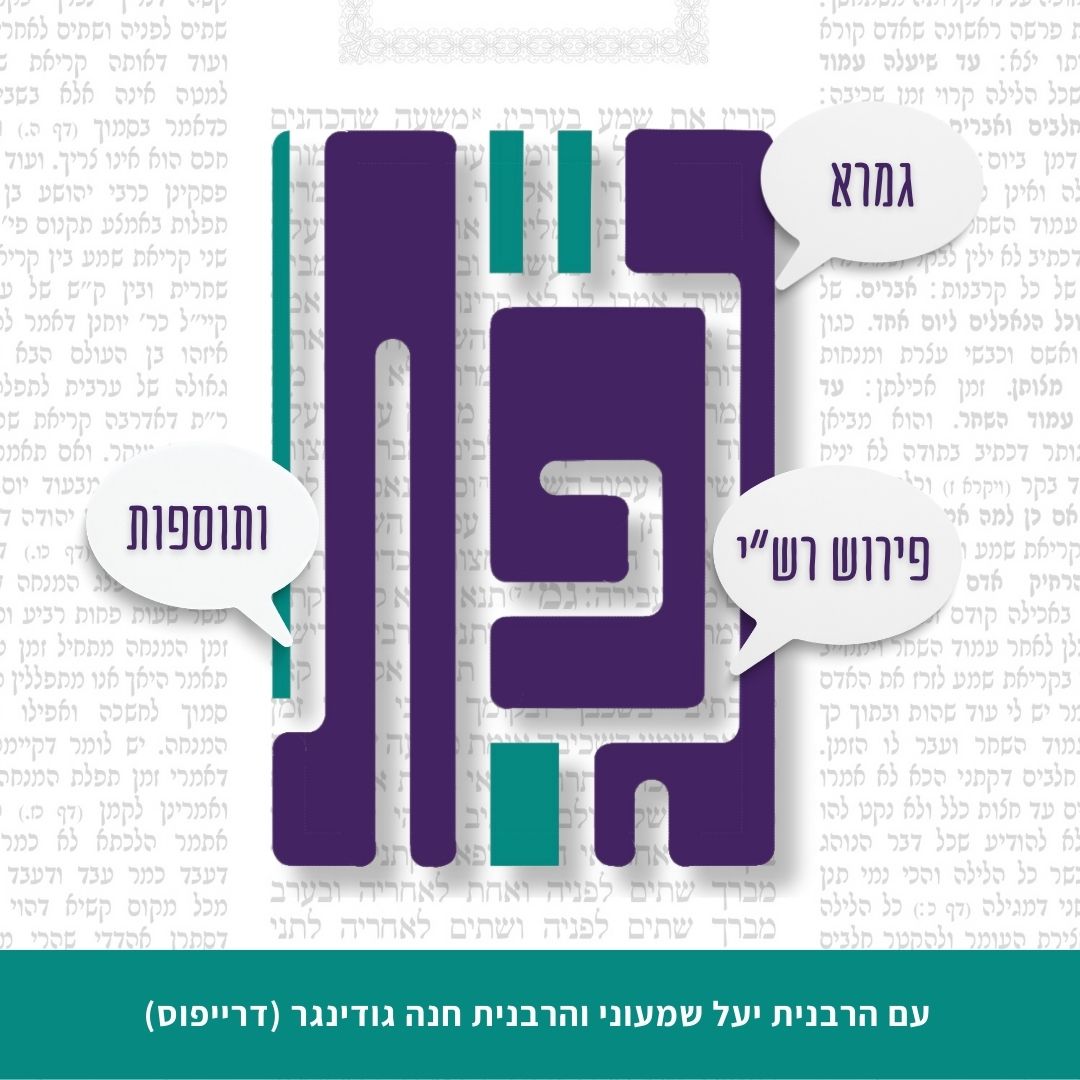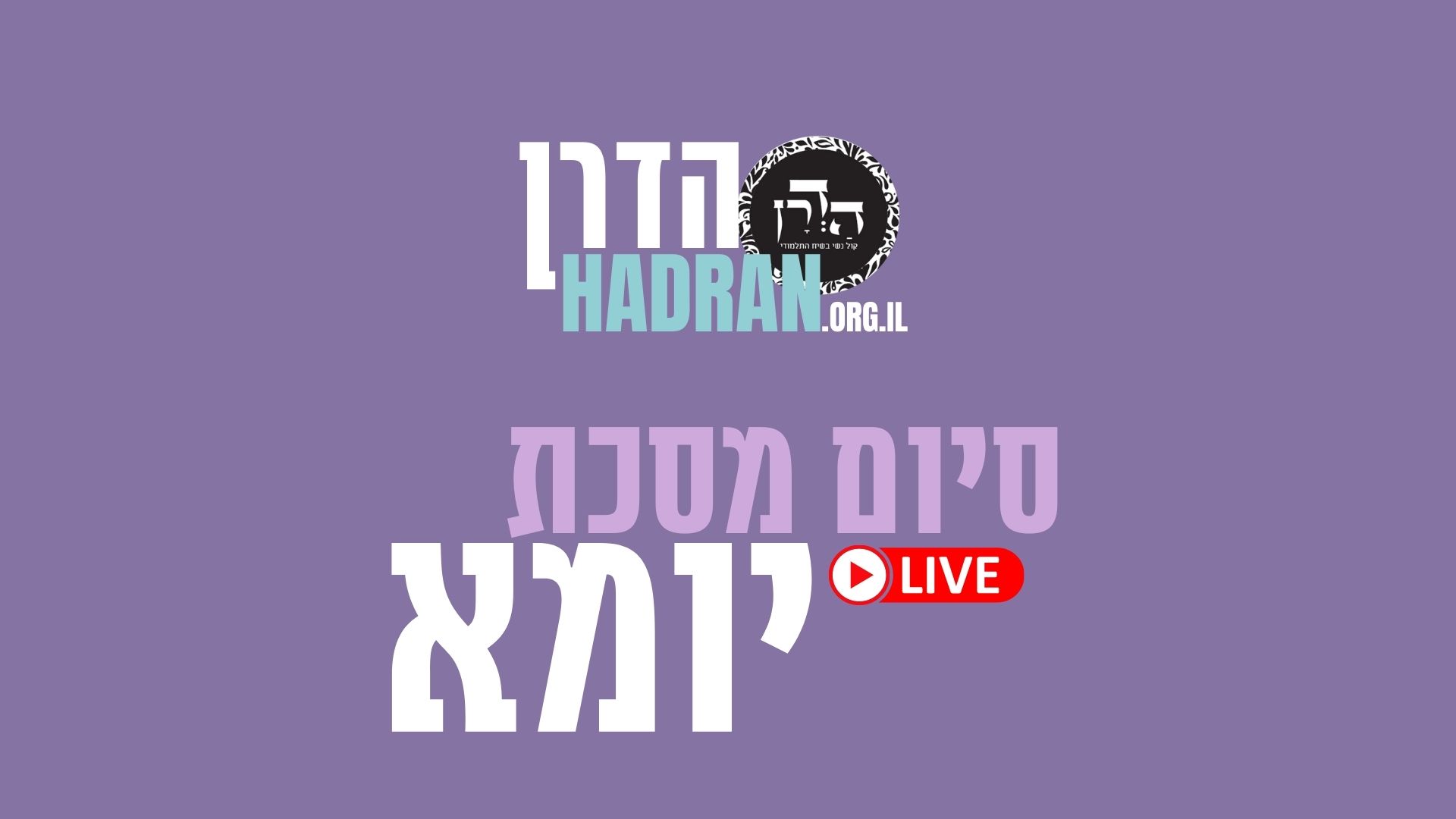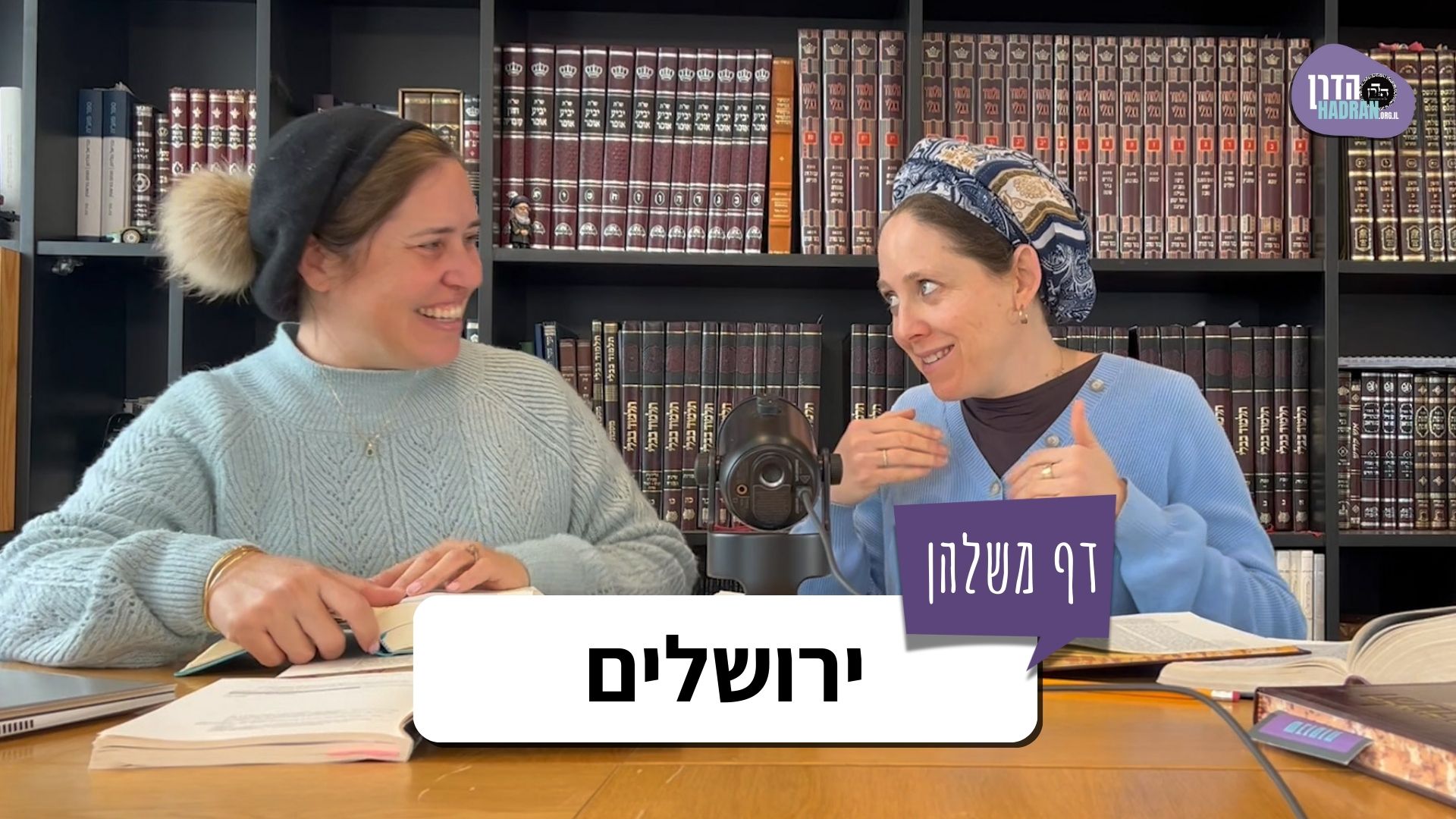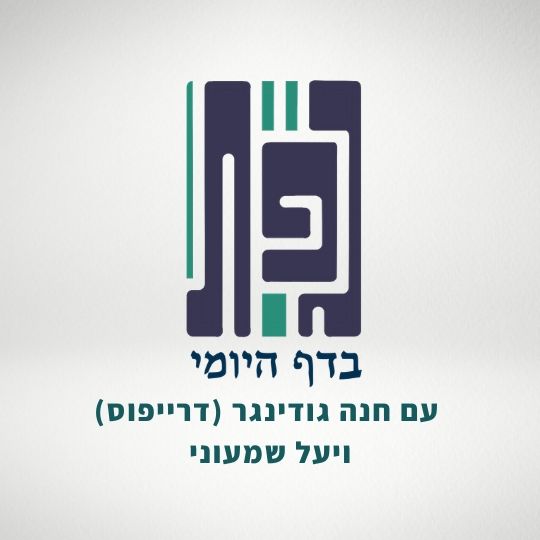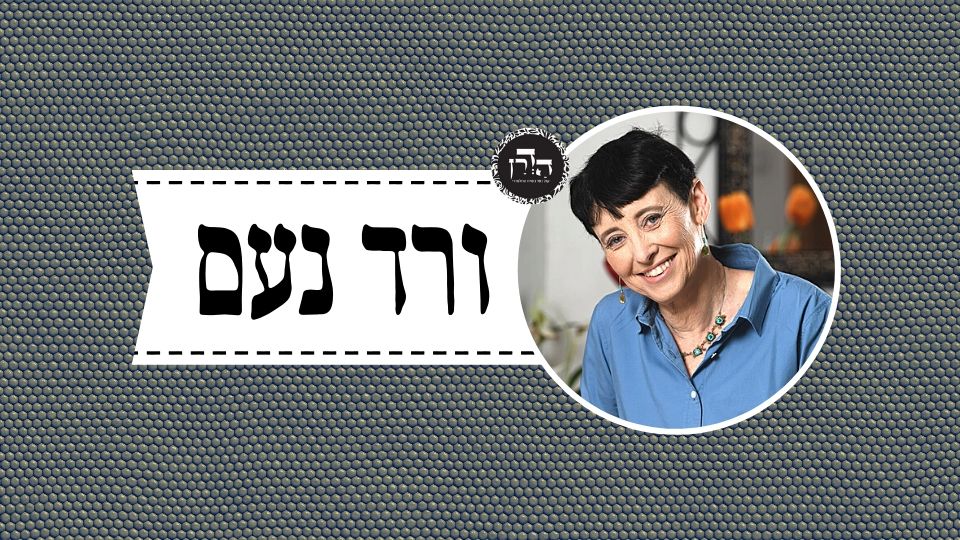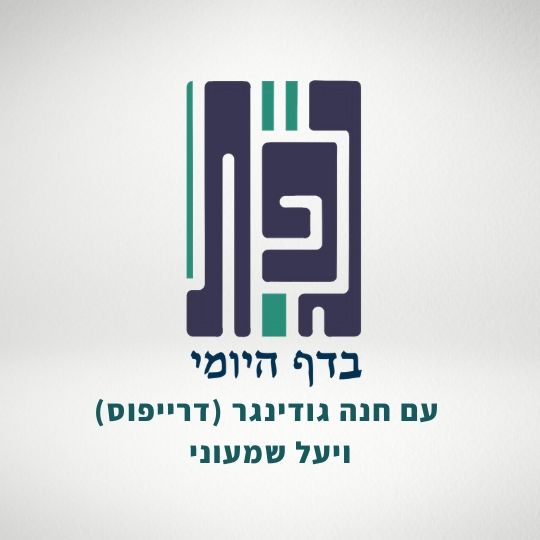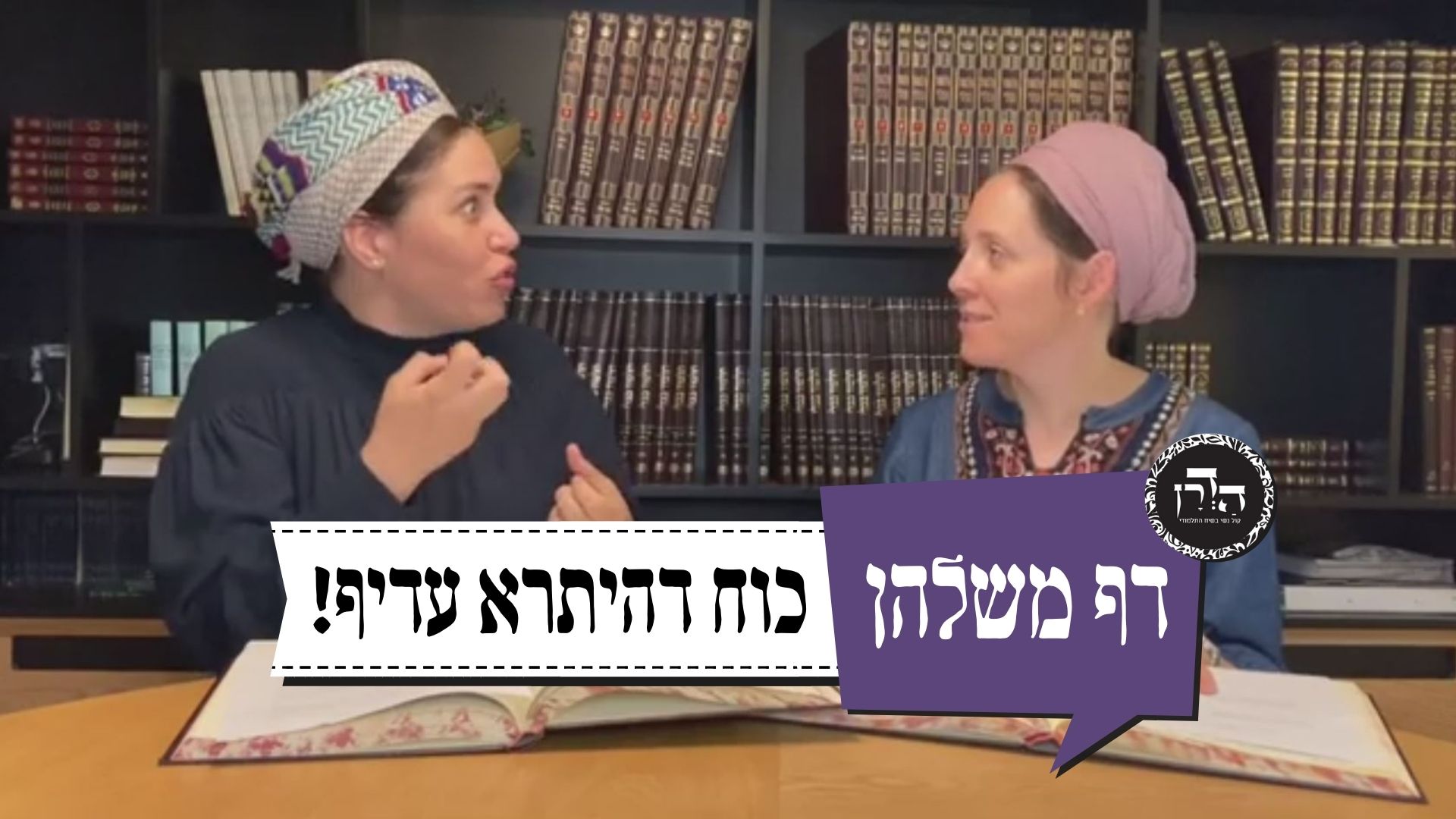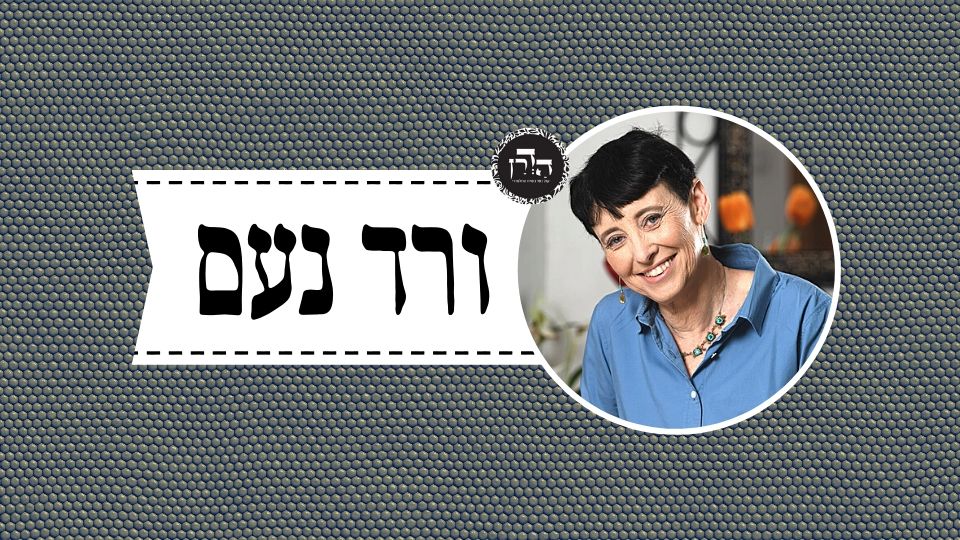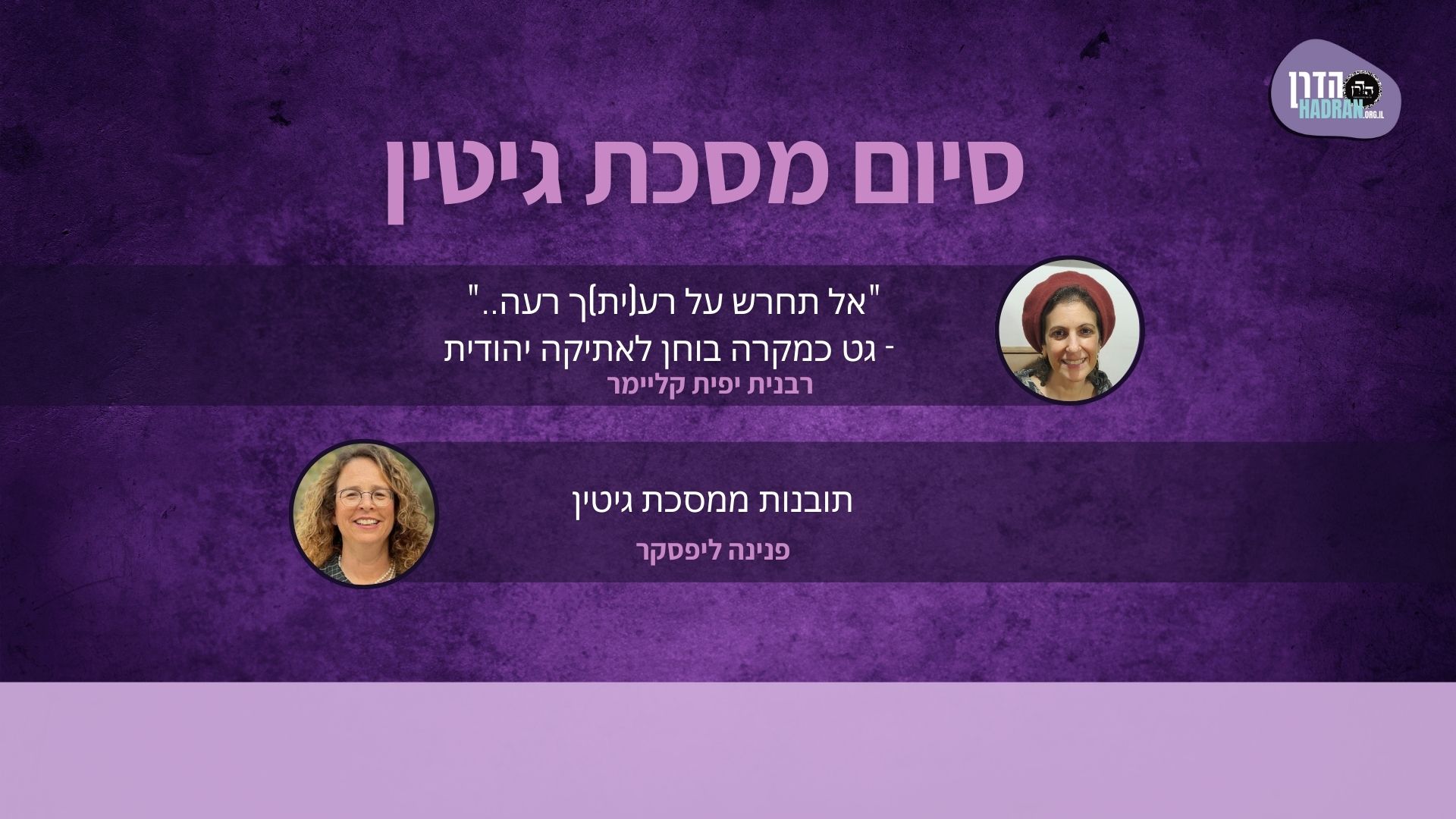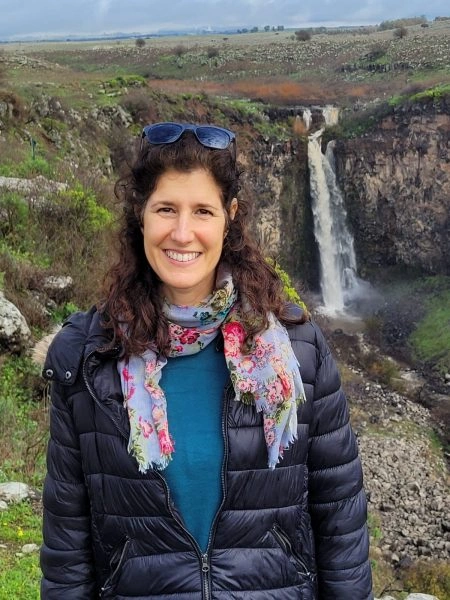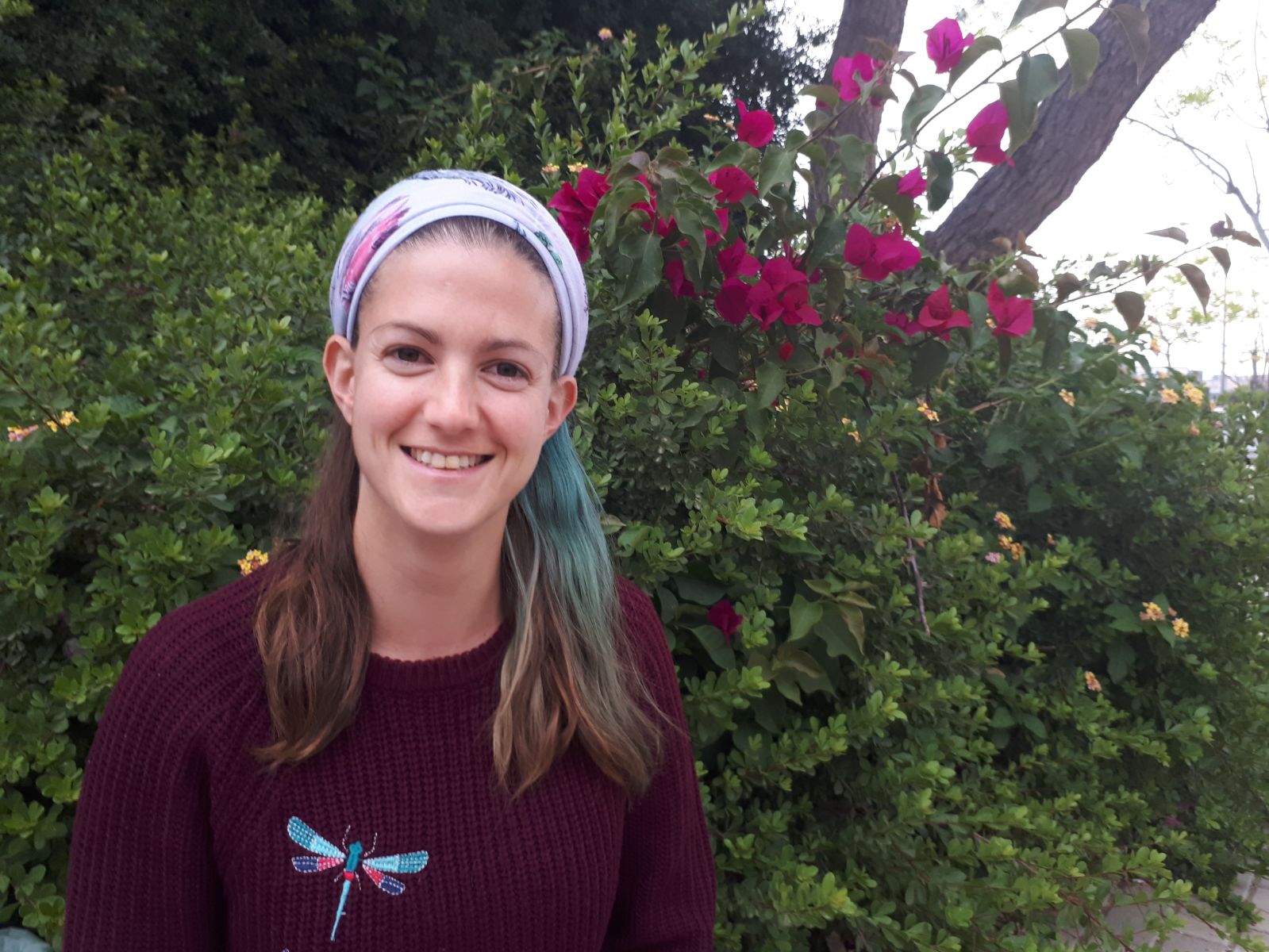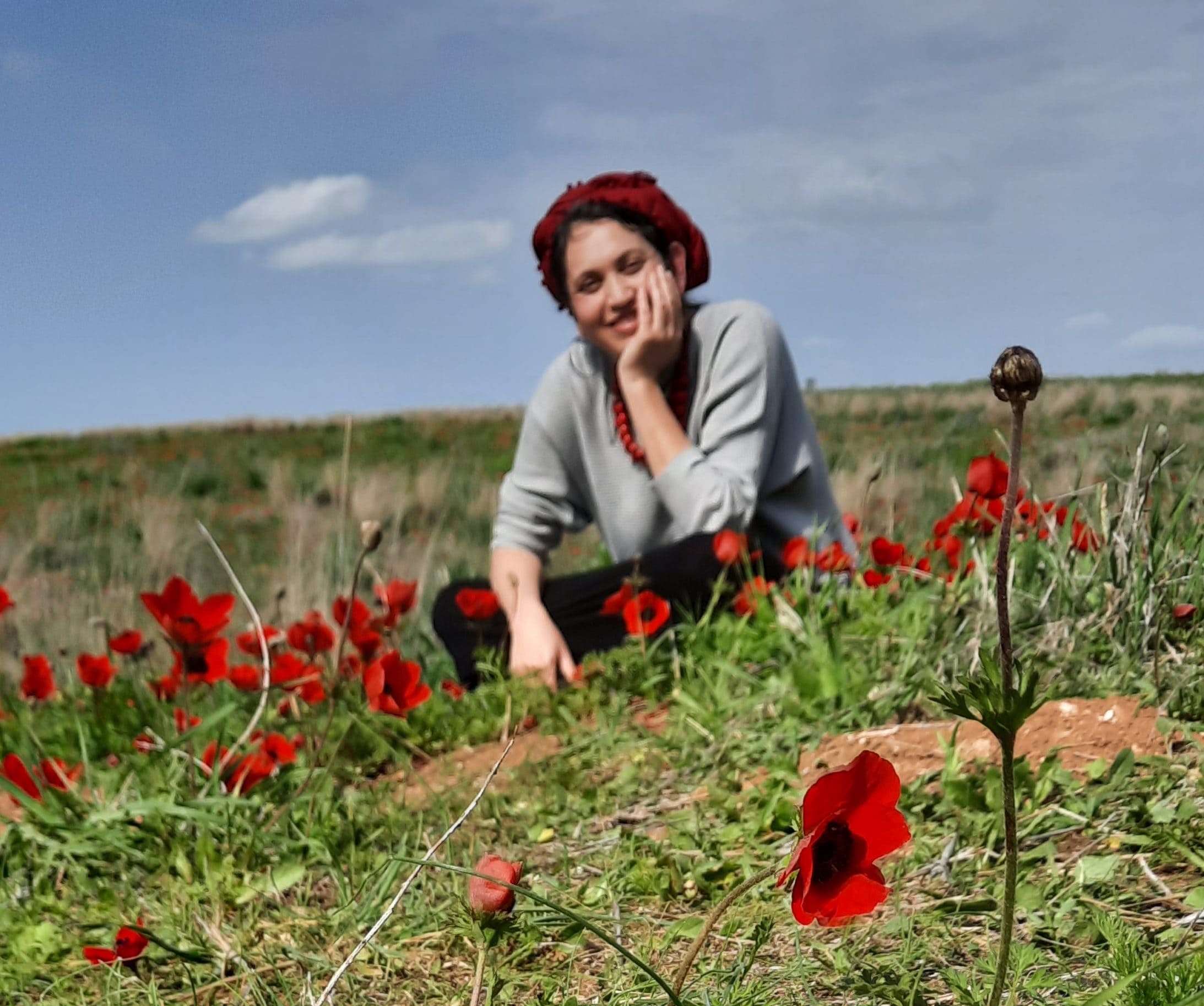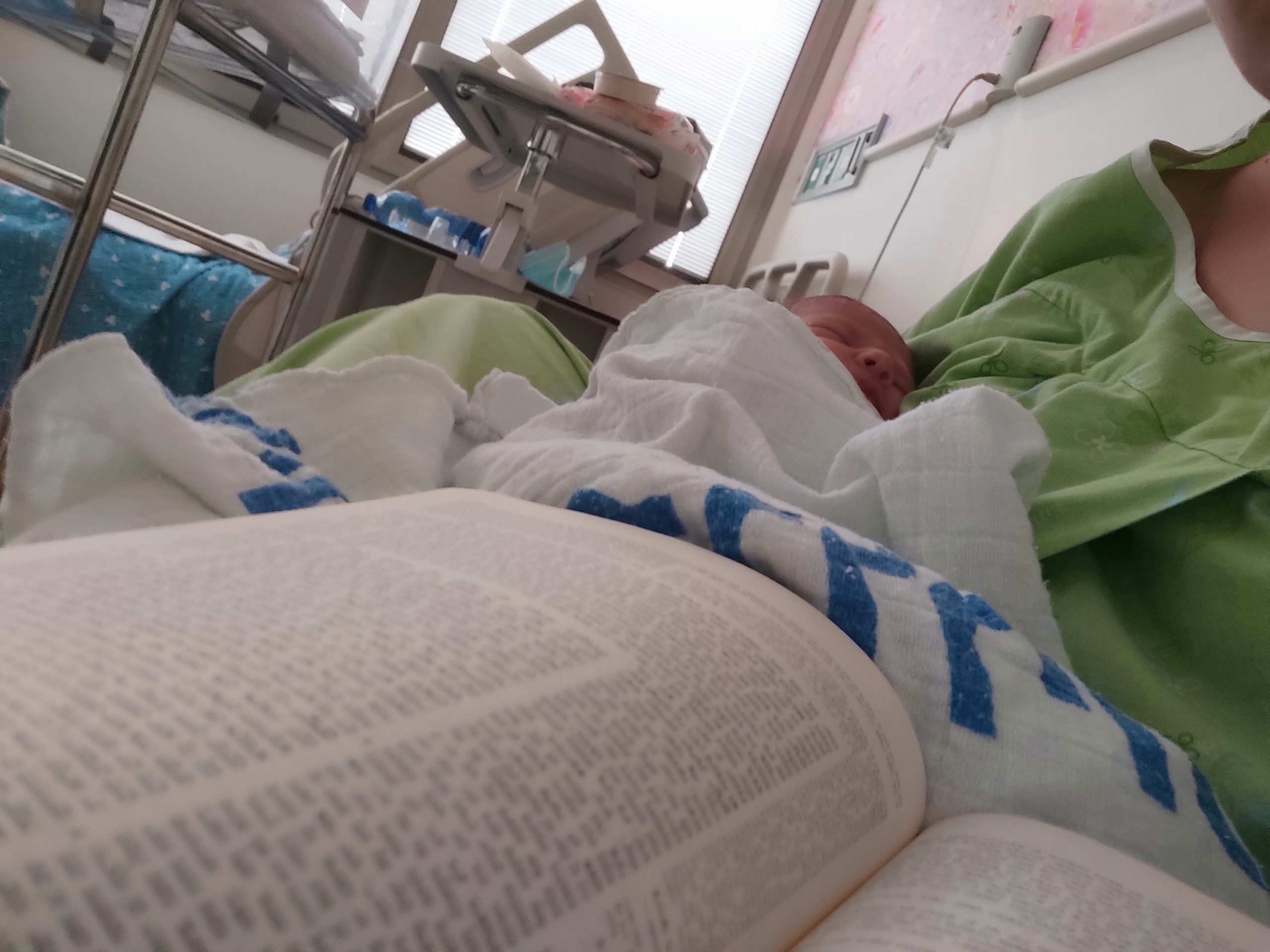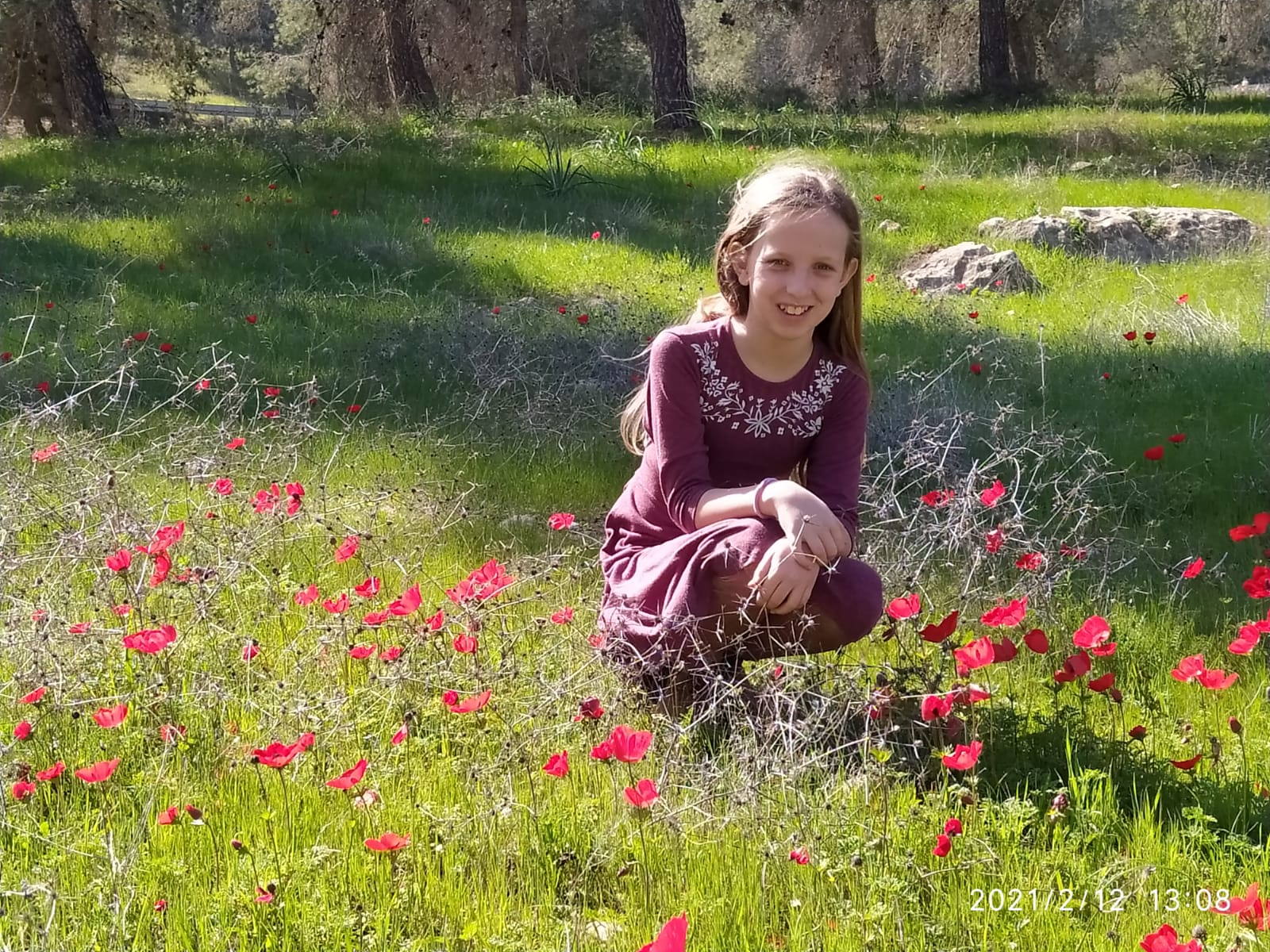הדין אותו ואת בנו שאסור לשחוט באותו יום- דעות שונות בטעמי המצווה (רמב”ם/רמב”ן/ספר החינוך). המשנה מביאה כל מיני וריאציות אפשרויות בין חולין ומוקדשים שנשחטו בחוץ ובפנים – האם ואיזה עונש יקבלו השוחטים ומה הסטטוס של הבשר בכל מקרה. הגמרא מביאה ברייתא שדנה במקור לכך שההלכה נוהגת גם בחוליןן וגם במוקדשים ודורשת שגם רלוונטי בבהמת כלאים. הגמרא מקשה על הדרשה בקשר לכלאים.
הלימוד השבוע מוקדש ע”י קרוליין בולג לע”נ פנחס בן מנשה פייזר.
רוצה להקדיש שיעור?

כלים
הלימוד השבוע מוקדש ע”י קרוליין בולג לע”נ פנחס בן מנשה פייזר.
כלים
העמקה
רוצה להבין מה באמת קורה מתחת לפני השטח של הסוגיה?
שיעורים, פודקאסטים והרחבות של מיטב המורות שלנו יפתחו לך עוד זוויות וכיווני חשיבה.
חדשה בלימוד הגמרא?
זה הדף הראשון שלך? איזו התרגשות עצומה! יש לנו בדיוק את התכנים והכלים שיעזרו לך לעשות את הצעדים הראשונים ללמידה בקצב וברמה שלך, כך תוכלי להרגיש בנוח גם בתוך הסוגיות המורכבות ומאתגרות.
פסיפס הלומדות שלנו
גלי את קהילת הלומדות שלנו, מגוון נשים, רקעים וסיפורים. כולן חלק מתנועה ומסע מרגש ועוצמתי.
חולין עח
דניכחוש חיליה אלא סוקרו בסיקרא אמאי כי היכי דליחזיוה אינשי וליבעי רחמי עילויה
that the tree’s strength will lessen. It is possible that the tree shed its fruits prematurely due to excessive blossoming. It taxes the tree to sustain these blossoms, and this may render the tree incapable of sustaining the fruits that subsequently grow from the blossoms. Stones were used to weaken the tree during blossoming, thereby reducing the number of blossoms that it needed to nourish. But with regard to painting it with red paint, for what benefit is it performed that makes it permitted despite the fact that this was the practice of the Amorites? The Gemara explains: One does so in order that people will see the tree and pray for it.
כדתניא (ויקרא יג, מה) וטמא טמא יקרא צריך להודיע לרבים ורבים מבקשים עליו רחמים וכן מי שאירע בו דבר צריך להודיע לרבים ורבים מבקשים עליו רחמים
As it is taught in a baraita: It is derived from the verse: “And he will cry: Impure, impure” (Leviticus 13:45), that a leper must publicize the fact that he is ritually impure. He must announce his pain to the masses, and the masses will pray for mercy on his behalf. And likewise, one to whom any unfortunate matter happens must announce it to the masses, and then the masses will pray for mercy on his behalf.
אמר רבינא כמאן תלינן כובסא בדיקלא כמאן כי האי תנא:
Ravina said: In accordance with whose opinion do we hang bunches of unripe dates on a palm tree that casts off its dates, despite the fact that this is the practice of the Amorites? It is in accordance with the opinion of this tanna of the baraita just cited, who states that one must announce such occurrences to the masses so that they will pray for mercy.
הדרן עלך בהמה המקשה
מתני׳ אותו ואת בנו נוהג בין בארץ בין בח”ל בפני הבית ושלא בפני הבית בחולין ובמוקדשין
MISHNA: The prohibition against slaughtering an animal itself and its offspring applies both in Eretz Yisrael and outside of Eretz Yisrael, both in the presence, i.e., the time, of the Temple and not in the presence of the Temple, and it applies with regard to non-sacred animals and with regard to sacrificial animals.
כיצד השוחט אותו ואת בנו חולין בחוץ שניהם כשרים והשני סופג את הארבעים
How so? In the case of one who slaughters an animal itself and its offspring, both of which are non-sacred, and slaughters them outside the Temple courtyard, both of the animals are fit for consumption, but for slaughtering the second animal, one incurs [sofeg] the forty lashes for violating the prohibition: “You shall not slaughter it and its offspring both in one day” (Leviticus 22:28).
קדשים בחוץ הראשון חייב כרת ושניהם פסולים ושניהם סופגים את הארבעים
If both animals were sacrificial animals slaughtered outside the Temple courtyard, then for slaughtering the first animal, one is liable to receive excision from the World-to-Come [karet]. For slaughtering the second animal one is not liable to receive karet. The second animal was not fit for sacrifice, since one may not slaughter an animal and its offspring on the same day. And both animals are disqualified for use as offerings, and for the slaughter of both of them, one incurs forty lashes apiece: The first being a sacrificial animal slaughtered outside the courtyard and the second being the offspring of an animal slaughtered that day.
חולין בפנים שניהם פסולין והשני סופג את הארבעים קדשים בפנים הראשון כשר ופטור והשני סופג את הארבעים ופסול
If both animals were non-sacred and slaughtered inside the Temple courtyard, both of them are unfit to be sacrificed, being non-sacred animals slaughtered in the courtyard. And for slaughter of the second animal, one incurs the forty lashes for slaughtering an animal and its offspring on a single day. If both animals were sacrificial animals slaughtered inside the Temple courtyard, the first is fit for sacrifice, and one who slaughters it is exempt from any punishment. But for slaughter of the second animal, one incurs the forty lashes for slaughtering an animal and its offspring on a single day, and it is unfit for sacrifice, because one was not allowed to slaughter it on that day.
חולין וקדשים בחוץ הראשון כשר ופטור והשני סופג את הארבעים ופסול
If the first animal was non-sacred and the second a sacrificial animal, and both were slaughtered outside the Temple courtyard, the first is fit for consumption and one who slaughters it is exempt from any punishment. But for slaughtering the second animal, one incurs the forty lashes for slaughtering an animal and its offspring on a single day, and the animal is unfit for sacrifice.
קדשים וחולין בחוץ הראשון חייב כרת ופסול והשני כשר ושניהם סופגים את הארבעים
If the first animal was a sacrificial animal and the second was non-sacred and both were slaughtered outside the Temple courtyard, for the first animal, one is liable to receive karet for slaughtering a sacrificial animal outside the courtyard, and the animal is unfit for sacrifice. And the second is fit for consumption; and for the slaughter of both of them one incurs forty lashes apiece: The first being a sacrificial animal slaughtered outside the courtyard and the second being the offspring of an animal slaughtered that day.
חולין וקדשים בפנים שניהם פסולין והשני סופג את הארבעים קדשים וחולין בפנים הראשון כשר ופטור והשני סופג את הארבעים ופסול
If the first animal was non-sacred and the second was a sacrificial animal and both were slaughtered inside the Temple courtyard, both of them are unfit for sacrifice. And for slaughtering the second animal, one incurs the forty lashes. If the first animal was a sacrificial animal and the second was non-sacred and both were slaughtered inside the Temple courtyard, the first is fit for sacrifice and one who slaughters it is exempt from any punishment. And for slaughtering the second animal, one incurs the forty lashes, and the animal is unfit for sacrifice, as it is non-sacred.
חולין בחוץ ובפנים הראשון כשר ופטור והשני סופג את הארבעים ופסול
If both animals were non-sacred, and one slaughters them, the first outside the Temple courtyard and the second inside the Temple courtyard, the first is fit for consumption and one who slaughters it is exempt from any punishment. And for slaughtering the second animal, one incurs the forty lashes for slaughtering an animal and its offspring on a single day, and the animal is unfit for sacrifice as it is non-sacred.
קדשים בחוץ ובפנים הראשון חייב כרת ושניהם סופגים את הארבעים ושניהם פסולים
If both animals were sacrificial animals, and one slaughters them, the first outside the Temple courtyard and the second inside the Temple courtyard, for slaughtering the first animal one is liable to receive karet, and for slaughtering both of them one incurs forty lashes apiece. One set of lashes is given because the first was a sacrificial animal slaughtered outside the courtyard, and the second set of lashes is given because the second animal is the offspring of an animal slaughtered that day. And both of them are unfit for sacrifice.
חולין בפנים ובחוץ הראשון פסול ופטור והשני סופג את הארבעים וכשר קדשים בפנים ובחוץ הראשון כשר ופטור והשני סופג את הארבעים ופסול:
If both animals were non-sacred, and one slaughters them, the first inside the Temple courtyard and the second outside the Temple courtyard, the first is unfit for sacrifice, as it is non-sacred, and the one who slaughters it is exempt. And for the second, one incurs the forty lashes and the animal is fit for consumption. If both animals were sacrificial animals, and one slaughters them, the first inside the Temple courtyard and the second outside the Temple courtyard, the first is fit for sacrifice and one who slaughters it is exempt. And for the second animal, one incurs the forty lashes, and the animal is unfit for sacrifice because its requisite time has not yet arrived.
גמ׳ ת”ר מנין לאותו ואת בנו שנוהג במוקדשין תלמוד לומר (ויקרא כב, כז) שור או כשב או עז כי יולד וכתיב בתריה (ויקרא כב, כח) ושור או שה אותו ואת בנו לא תשחטו ביום אחד לימד על אותו ואת בנו שנוהג במוקדשין
GEMARA: The Sages taught in a baraita: From where is it derived that the prohibition against slaughtering an animal itself and its offspring in a single day applies to sacrificial animals? It is derived from a verse, as the verse states: “When a bull, or a sheep, or a goat, is born…but from the eighth day and forward it may be accepted for an offering…to the Lord” (Leviticus 22:27), and it is written in the following verse: “And whether it be a bull or a sheep, you shall not slaughter it and its offspring both in one day.” The juxtaposition of the verses teaches with regard to the prohibition against slaughtering an animal itself and its offspring that it applies to sacrificial animals as well.
ואימא במוקדשין אין בחולין לא שור הפסיק הענין
The Gemara challenges: But since this prohibition is taught in the context of other halakhot of consecrated animals, perhaps I will say: Yes, it applies to sacrificial animals, but it does not apply to non-sacred animals. The Gemara explains: The repetitive phrase “and whether it be a bull or a sheep” in the second verse, when those types of animals, i.e., bulls and sheep, were already mentioned in the first verse, interrupted the topic, clarifying that the second verse is not referring to sacrificial animals.
ואימא בחולין אין במוקדשין לא כתיב ושור וי”ו מוסיף על ענין ראשון
The Gemara challenges: But if so, I will say: Yes, the prohibition applies to non-sacred animals, but it does not apply to sacrificial animals. The Gemara explains: Since in that verse it is written: “And whether it be a bull…you shall not slaughter it and its offspring,” the conjunction “and” adds the prohibition stated in the second verse to the first matter, including sacrificial animals as well.
אי מה קדשים כלאים לא אף אותו ואת בנו כלאים לא אלמה תניא אותו ואת בנו נוהג בכלאים ובכוי
The Gemara challenges: If this prohibition also applies to sacrificial animals, perhaps just as with regard to sacrificial animals, the offspring of diverse kinds is not included, e.g., the offspring of a ewe and a goat is unfit to be an offering, so too with regard to the prohibition of: A mother and its offspring, the offspring of diverse kinds should not be included, so that in the case of the offspring of a ewe and a goat, it would be permitted to slaughter the mother and offspring on the same day. Why, then, is it taught in a baraita (see Tosefta 5:1): The prohibition of: A mother and its offspring, applies to the offspring of diverse kinds and to a koy, a kosher animal with characteristics of both domesticated and undomesticated animals?
ועוד שה כתיב ואמר רבא
And additionally, why should the prohibition of: A mother and its offspring, apply to the offspring of diverse kinds? “A sheep,” is written in the verse with regard to that prohibition, and Rava said
זה בנה אב כל מקום שנאמר שה אינו אלא להוציא את הכלאים אמר קרא או לרבות את הכלאים
concerning the verse: “These are the animals that you may eat: An ox, a seh of sheep, and a seh of goats” (Deuteronomy 14:4), that this verse establishes a paradigm for other cases: Wherever the word seh is stated in the Torah, it serves only to exclude an animal of diverse kinds. The Hebrew word seh denotes either a sheep or a goat. The offspring of diverse kinds, which is neither a sheep nor a goat, does not qualify as a seh. The Gemara answers that with regard to a mother and its offspring, the verse states: “Whether it be a bull or a sheep” (Leviticus 22:28), and the “or” is superfluous there and serves to include the offspring of diverse kinds.
האי או מיבעי ליה לחלק דס”ד אמינא עד דשחיט שור ובנו שה ובנו לא מיחייב קמ”ל לחלק מבנו נפקא
The Gemara challenges: This word “or” is necessary to separate the prohibitions, as it might enter your mind to say: One is not liable unless he slaughters both a bull and its offspring and a sheep and its offspring in a single day. Therefore, the word “or” teaches us that one is liable for slaughtering either type of animal with its offspring. The Gemara responds: Separating the prohibitions is derived from the use of the words “its offspring” instead of their offspring.
ואכתי מיבעי ליה לכדתניא אילו נאמר שור ושה ובנו הייתי אומר עד שישחוט שור ושה ובנו ת”ל (ויקרא כב, כח) שור או שה אותו ואת בנו מאי לאו מאו נפקא ליה לא מאותו
The Gemara challenges: But the word “or” is still necessary for that which is taught in a baraita: If it were stated: A bull, and a sheep, and its offspring you shall not slaughter in one day, I would say: One is not liable unless he slaughters a bull, and a sheep, and the offspring of one of them in a single day. Therefore, the verse states: “A bull or a sheep…it and its offspring” (Leviticus 22:28), to teach that one is liable even for slaughtering either of them and its offspring. What, is it not from the word “or” that the baraita derives this halakha? The Gemara responds: No, it is derived from the word “it,” and the offspring of diverse kinds are included in the prohibition due to the word “or.”
הניחא לרבנן דמייתר להו אותו אלא לחנניה דלא מייתר ליה אותו לחלק מנא ליה לחלק לא צריך קרא דסבר לה כר’ יונתן
The Gemara asks: This works out well according to the opinion of the Rabbis, cited further in the discussion, for whom the word “it” is superfluous and can be used for this derivation, leaving the word “or” available to include the offspring of diverse kinds; but according to the opinion of Ḥananya, for whom the word “it” is not superfluous, from where does he derive that one is to separate into two prohibitions slaughtering either a bull with its offspring or a sheep with its offspring? The Gemara answers that there is no need for a verse to separate them into two prohibitions, as Ḥananya holds in accordance with the opinion of Rabbi Yonatan.
דתניא (ויקרא כ, ט) איש אשר יקלל את אביו ואת אמו אין לי אלא אביו ואמו אביו שלא אמו ואמו שלא אביו מנין ת”ל (ויקרא כ, ט) אביו ואמו קלל אביו קלל אמו קלל דברי ר’ יאשיה
As it is taught in a baraita: From the verse: “A man who curses his father and his mother shall die” (Leviticus 20:9), I have derived only that one is liable if he curses both his father and his mother. From where do I derive that if one curses his father but not his mother, or his mother but not his father, he is liable? The continuation of the verse states: “His father and his mother he has cursed, his blood is upon him.” In the first part of the verse, the word “curses” is in proximity to “his father,” and in the last part of the verse, “cursed” is in proximity to “his mother.” This teaches that the verse is referring to both a case where he cursed only his father and a case where he cursed only his mother; this is the statement of Rabbi Yoshiya. Rabbi Yoshiya maintains that conjunctions are interpreted strictly unless the verse indicates otherwise.
ר’ יונתן אומר משמע שניהם כאחד ומשמע אחד בפני עצמו עד שיפרוט לך הכתוב יחדו
Rabbi Yonatan says: There is no need for this derivation, because the phrase “his father and his mother” indicates that one is liable if he curses both of them together, and it also indicates that he is liable if he curses either one of them on their own, unless the verse specifies that one is liable only if he curses both together. An example of a verse where the Torah specifies that the halakha applies only to the two elements in conjunction is: “You shall not plow with an ox and a donkey together” (Deuteronomy 22:10). According to Rabbi Yonatan, had the verse stated with regard to a mother and its offspring: A bull and a sheep, and not: A bull or a sheep, one would still be liable for slaughtering each with its own offspring independently. Therefore, the word “or” is superfluous, and is utilized by Ḥananya, who agrees with the opinion of Rabbi Yonatan, to include the offspring of diverse kinds in this prohibition.
מאי חנניה ומאי רבנן דתניא אותו ואת בנו נוהג בנקבות ואינו נוהג בזכרים חנניה אומר נוהג בין בזכרים ובין בנקבות
The Gemara asks: What is the opinion of Ḥananya, and what is the opinion of the Rabbis that were mentioned earlier? Their opinions are elucidated as it is taught in a baraita: Despite the fact that the verse is written in the masculine form, the prohibition against slaughtering itself and its offspring in a single day applies to females, i.e., to a mother and its offspring, but it does not apply to males, i.e., a male animal and its offspring. Ḥananya says: It applies both to males and to females.
מ”ט דרבנן דתניא יכול יהא אותו ואת בנו נוהג בין בזכרים ובין בנקבות ודין הוא חייב כאן וחייב באם על הבנים מה כשחייב באם על הבנים בנקבות ולא בזכרים אף כשחייב כאן בנקבות ולא בזכרים
The Gemara asks: What is the reasoning of the Rabbis, i.e., the first tanna? Their reasoning is as it is taught in a baraita: One might have thought that the prohibition against slaughtering a mother and its offspring would apply both to males and to females. But could one not derive this by logical inference, reaching the opposite conclusion: The Torah rendered one obligated here not to slaughter an animal and its offspring in a single day, and the Torah rendered one obligated with regard to a mother bird with its chicks not to seize them together, but to dispatch the mother. Just as when it rendered one obligated with regard to a mother bird with its chicks, the obligation applies to female birds but not to males, as the verse states: “And the mother sitting on the chicks” (Deuteronomy 22:6), so too, when it rendered one obligated here, with regard to an animal and its offspring, the obligation should apply to female animals, but not to males.
לא אם אמרת באם על הבנים שכן לא עשה בה מזומן כשאינו מזומן תאמר באותו ואת בנו שעשה בו מזומן כשאינו מזומן
One may respond: No, if you say that this is so with regard to a mother bird with its chicks, for which the Torah did not render prepared ones equivalent to unprepared ones, as the obligation to dispatch the mother bird applies only where one happens to encounter a mother bird with its chicks spontaneously, but not to ones that he keeps in his property, shall you also say that this is so with regard to the prohibition of an animal itself and its offspring, for which the Torah rendered prepared ones equivalent to unprepared ones, prohibiting an animal and its offspring even if they are prepared? If so, the prohibition against slaughtering an animal and its offspring should apply to both males and females.
ת”ל אותו א’ ולא ב’ אחר שחלק הכתוב זכיתי לדין חייב כאן וחייב באם על הבנים מה כשחייב באם על הבנים בנקבות ולא בזכרים אף כשחייב כאן בנקבות ולא בזכרים
Therefore, the verse states: “A bull or a sheep, it and its offspring” (Leviticus 22:28). The superfluous word “it” indicates that this applies to only one parent, but not to two. The baraita continues: After the verse separated the parents, rendering the prohibition applicable to only one of them, I merited returning to the logical inference mentioned earlier: The Torah rendered one obligated here not to slaughter an animal and its offspring in a single day, and the Torah rendered one obligated to dispatch the mother with regard to a mother bird with its chicks. Just as when it rendered one obligated with regard to a mother bird with its chicks, the obligation applies to females but not to males, so too, when it rendered one obligated here, the obligation applies to females but not to males.
ואם נפשך לומר בנו מי שבנו כרוך אחריו יצא זכר שאין בנו כרוך אחריו
And if it is your wish to say that one can refute this, that refutation can be countered by the following derivation: The verse states: “It and its offspring” (Leviticus 22:28), indicating that this applies to that parent whose offspring clings to it. This serves to exclude the male parent, whose offspring does not cling to it.
מה אם נפשך לומר וכי תימא אותו זכר משמע הרי הוא אומר בנו מי שבנו כרוך אחריו יצא זכר שאין בנו כרוך אחריו
The Gemara asks: To what possible refutation is the expression: If it is your wish to say, referring? The Gemara explains that the possible refutation is: And if you would say that the word “it,” in the verse denotes a male, as it is expressed in the masculine gender in the Hebrew, the response is that the verse also states “its offspring” in that verse, indicating that this applies to that parent whose offspring clings to it. This serves to exclude the male parent, whose offspring does not cling to it.

